Quick Bites:
- The blog discusses the installation and configuration of Hyper-V Core 2019, highlighting its widespread adoption and increased capabilities in Windows Server 2019
- It outlines the requirements, installation process, and various management options, emphasizing the benefits of using Hyper-V Core for virtualization
- With new tools like Windows Admin Center and Feature on Demand, managing Windows Server Core installations has become more streamlined
- The article concludes by emphasizing the efficiency and security advantages of Hyper-V Core for running production environments
Microsoft’s Hyper-V hypervisor has matured quickly in the enterprise datacenter as a fully-featured hypervisor. Especially with the last couple of Windows Server versions (Windows Server 2016 and 2019), Hyper-V has received many of the features and capabilities that help to move it very close to feature parity with the other major players in the industry.
Table of Contents
- Windows Server Core Widespread Adoption
- Hyper-V Core More Powerful Than Ever
- Hyper-V Core Requirements
- Hyper-V Core Installation
- Windows Server 2019 Core Install with Hyper-V Role
- Configuring Windows Server Core and Installing Hyper-V Role
- Adding the Hyper-V Role Using PowerShell
- Adding the Hyper-V Role Using Windows Admin Center
- Creating and Managing Hyper-V Virtual Machines
- Feature on Demand (FoD) – App Compatibility
- Hyper-V Core Pros and Cons
- Concluding Thoughts
One of the great benefits to the recent maturing of Windows Server, especially with Windows Server 2019, the Windows Server Core version has had rapid adoption with the great new tools available including Windows Admin Center and Features on Demand. For a long while now, running Hyper-V on Windows Server Core has been the recommended platform for a number of reasons. With Windows Server 2019 Core becoming mainstream with even better tools, you can easily run your production Hyper-V environment on Windows Server Core.
Let’s take a look at Hyper-V Core and the various aspects of running your production Hyper-V virtual machines on top of Windows Server Core edition.
Windows Server Core Widespread Adoption
Microsoft has put major development time into new tools and management for Windows Server 2019. For a long while, the cumbersome management of Windows Server Core was a major hindrance to its adoption across the board.
However, in conjunction with Windows Server 2019, Microsoft introduced Windows Admin Center which is a fully-featured, all-inclusive next-generation management tool that allows flexible, modern management of all editions of Windows Server, including Core.
Any reservations that IT admins have had before about utilizing Windows Server Core in their environments due to lack of management capabilities is no longer an issue with Windows Admin Center.
Hyper-V Core More Powerful Than Ever
With the more powerful features and management found in Windows Server 2019 Core, thanks to Windows Admin Center and other new features such as the Feature on Demand capabilities, Hyper-V on this platform makes more sense than ever.
When running a hypervisor platform for your business-critical workloads, you want the most efficient, lean, streamlined, and hardened platform that you can run. For Hyper-V, this is Windows Server Core. Windows Server Core provides many advantages when compared to Windows Server installed with the Desktop Experience enabled. These include the following:
- Reduced Servicing – Because Server Core is installed with only the required features enabled, it requires much less servicing than Windows Server installed with the Desktop Experience
- Reduced Management – Fewer components installed means reduced management is required
- Reduced Attack Surface – Security is a huge concern in most environments today. Because there are fewer components installed, less services running, and reduced features enabled, Windows Server Core has a minimal attack surface when compared to Windows Server with Desktop features installed
- Less Disk Space Required – With Windows Server 2019, it requires about 4 GB less disk space than Windows Server 2019 with Desktop Experience
All things considered; these advantages provide tremendous incentive for using Windows Server Core as the platform for Hyper-V.
Hyper-V Core Requirements
Aside from the number of hardware resources that will be required to run your workloads on your Hyper-V Core hosts, Hyper-V in Windows Server 2019 or Hyper-V 2019 Server has these general requirements:
- A 64-bit processor with second-level address translation (SLAT). To install the Hyper-V virtualization components such as Windows hypervisor, the processor must have SLAT. However, it’s not required to install Hyper-V management tools like Virtual Machine Connection (VMConnect), Hyper-V Manager, and the Hyper-V cmdlets for Windows PowerShell. See “How to check for Hyper-V requirements,” below, to find out if your processor has SLAT
- VM Monitor Mode extensions
- Enough memory – plan for at least 4 GB of RAM. More memory is better. You’ll need enough memory for the host and all the virtual machines that you want to run at the same time
- Virtualization support turned on in the BIOS or UEFI:
- Hardware-assisted virtualization. This is available in processors that include a virtualization option – specifically processors with Intel Virtualization Technology (Intel VT) or AMD Virtualization (AMD-V) technology
- Hardware-enforced Data Execution Prevention (DEP) must be available and enabled. For Intel systems, this is the XD bit (execute disable bit). For AMD systems, this is the NX bit (no execute bit)
Host requirements for additional Hyper-V features such as Shielded VMs will require some additional hardware components:
- UEFI 2.3.1c – supports secure, measured boot
The following two are optional for virtualization-based security in general, but required for the host if you want the protection these features provide:
- TPM v2.0 – protects platform security assets
- IOMMU (Intel VT-D) – so the hypervisor can provide direct memory access (DMA) protection
Hyper-V Core Installation
When you are looking at installing Hyper-V in Windows Server Core, there are two approaches you can take, depending on the licensing you want to utilize. Hyper-V 2019 Server is essentially a free version of Hyper-V that is basically the Hyper-V role pre-installed on Windows Server Core.
When you install Hyper-V 2019 Server, it comes pre-installed Hyper-V role available and ready to use. However, licensing with Hyper-V 2019 Server is totally ad-hoc. You do not get Windows licenses “in the box” with Hyper-V 2019 Server. You will have to purchase any Windows licenses needed for each instance of Windows you run on top of the Hyper-V 2019 Server.
When you install Windows Server Core in either Standard or Datacenter versions and then install the Hyper-V role, you get the benefits of licensing that is included with those versions of Windows. When Windows Server 2019 Standard edition is licensed on your Hyper-V host, you are able to run (2) Windows VMs without needing additional licensing. If you license and run Datacenter on your Hyper-V host, you are able to run unlimited Windows VMs on your Windows Server Core Datacenter host.
With these points in mind, you will have to make a decision based on your use case which edition of Windows you are going to use for your Hyper-V Core host. For the purposes of the installation walkthrough, we will demonstrate using Windows Server 2019 loaded as the Core installation and then install the Hyper-V role. This will be the typical edition and configuration used in most enterprise data centers running production workloads on top of Hyper-V.
Windows Server 2019 Core Install with Hyper-V Role
Since we are installing the Windows Server 2019 Core operating system first, let’s do that to get Windows Server Core installed and then add the Hyper-V Role. Boot off the media and select language and other options on the first screen.
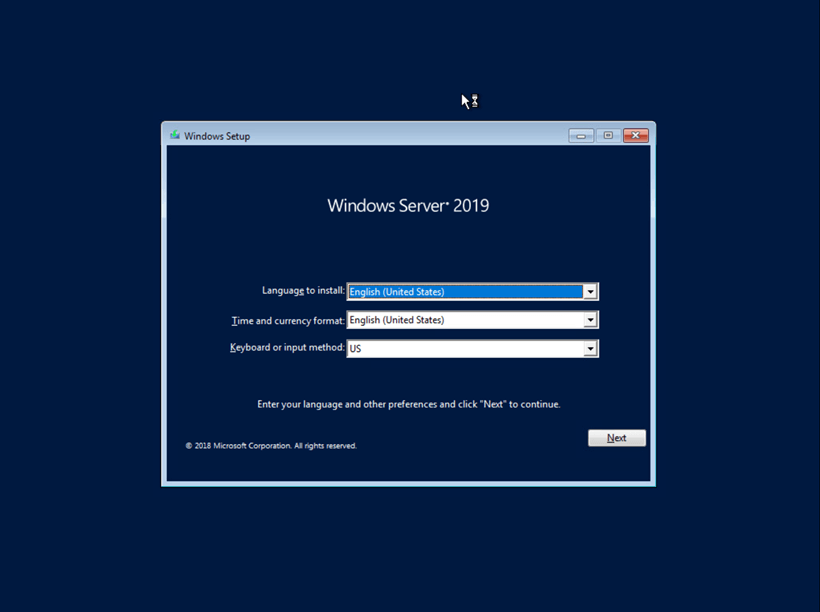
Click Install Now to begin the installation.
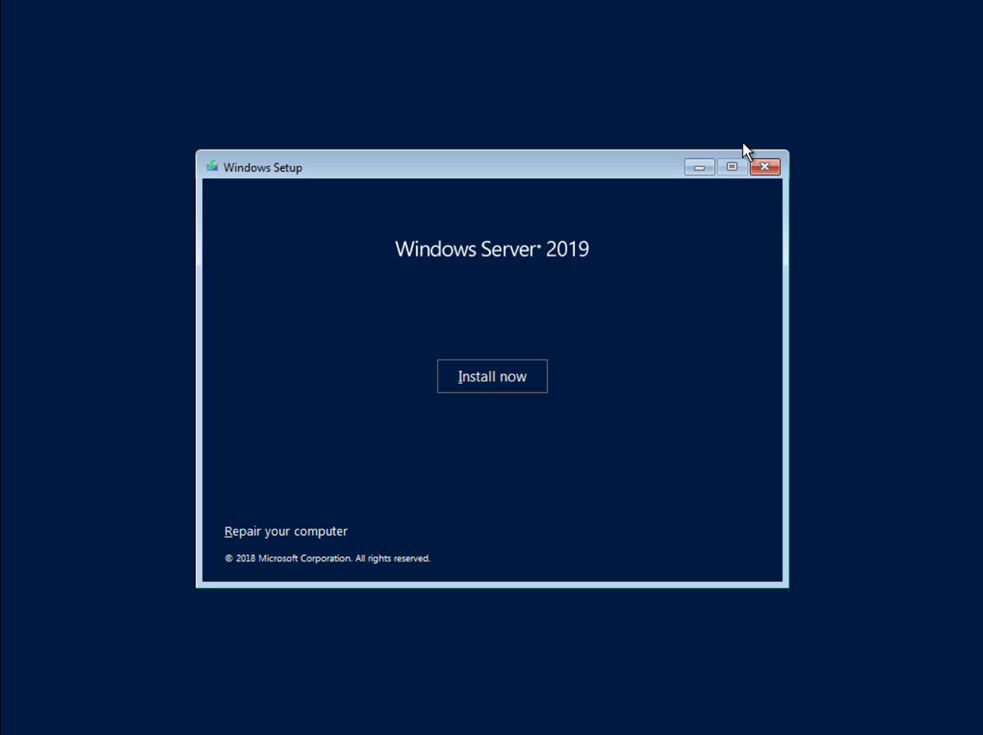
With Windows Server 2019, you can either enter a product key or select the I don’t have a product key option to bypass this during installation.
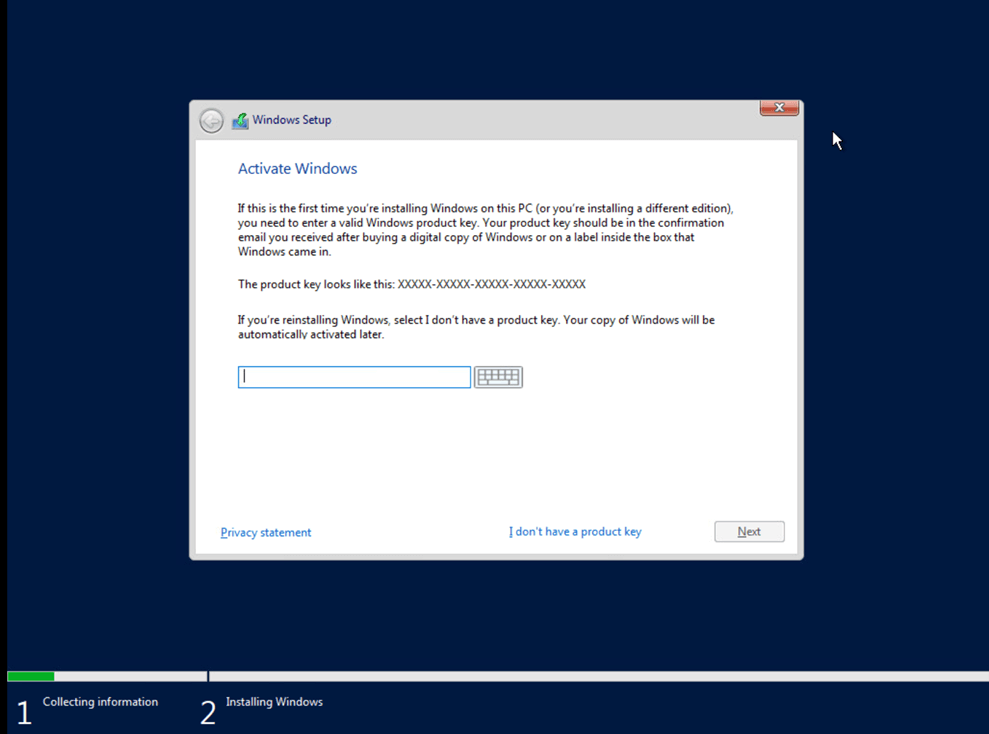
The next screen is where you want to pay attention. Now, by default, if you simply next through this screen, you will be installing Windows Server Standard edition without the GUI. If you notice the Windows Server version with the GUI is noted with the Desktop Experience designation. Here, I am selecting the Windows Server 2019 Datacenter option which is without the Desktop Experience, so it is the Core version.
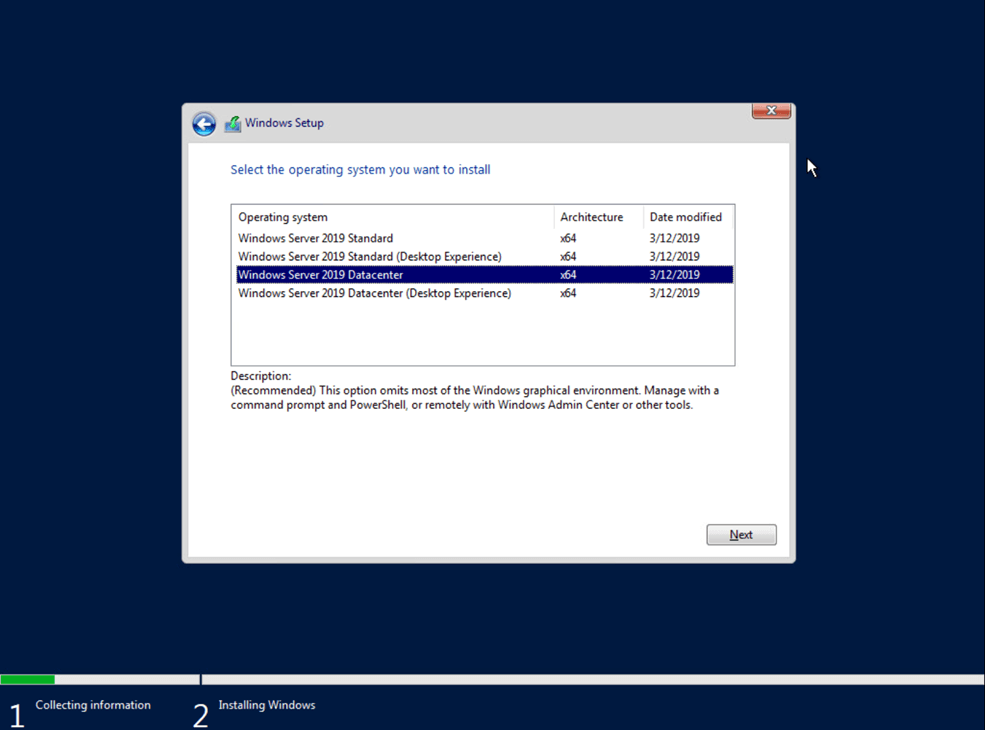
Next, accept the EULA for the installation.
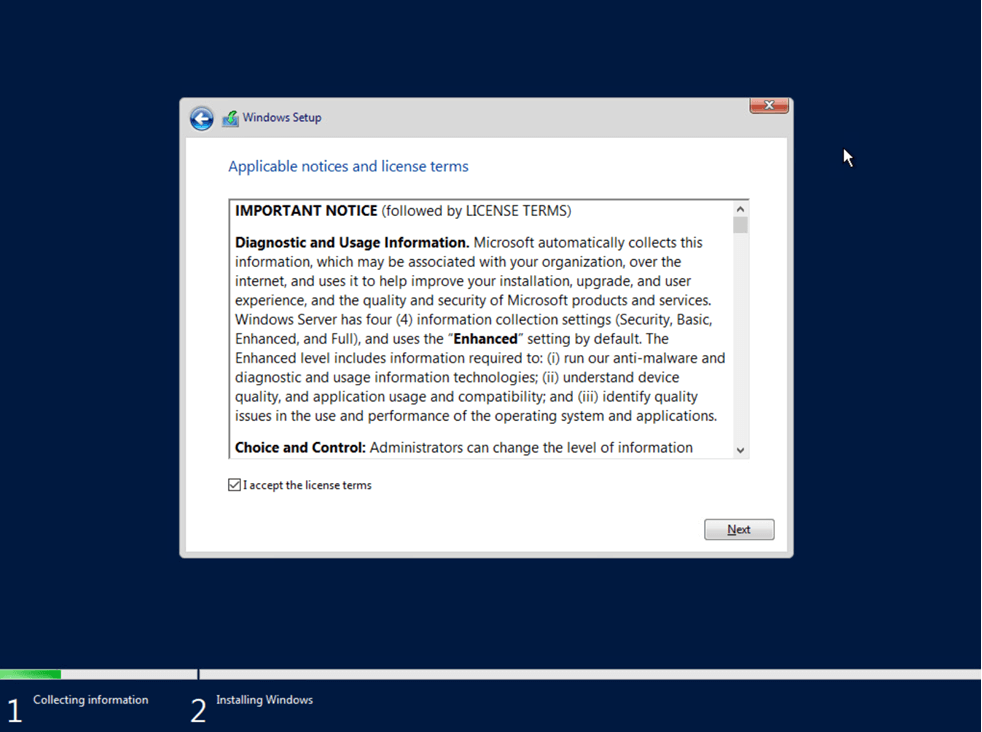
If you are performing a clean installation of Windows Server 2019 Core edition, you will want to select the Custom: Install Windows only (advanced) option.
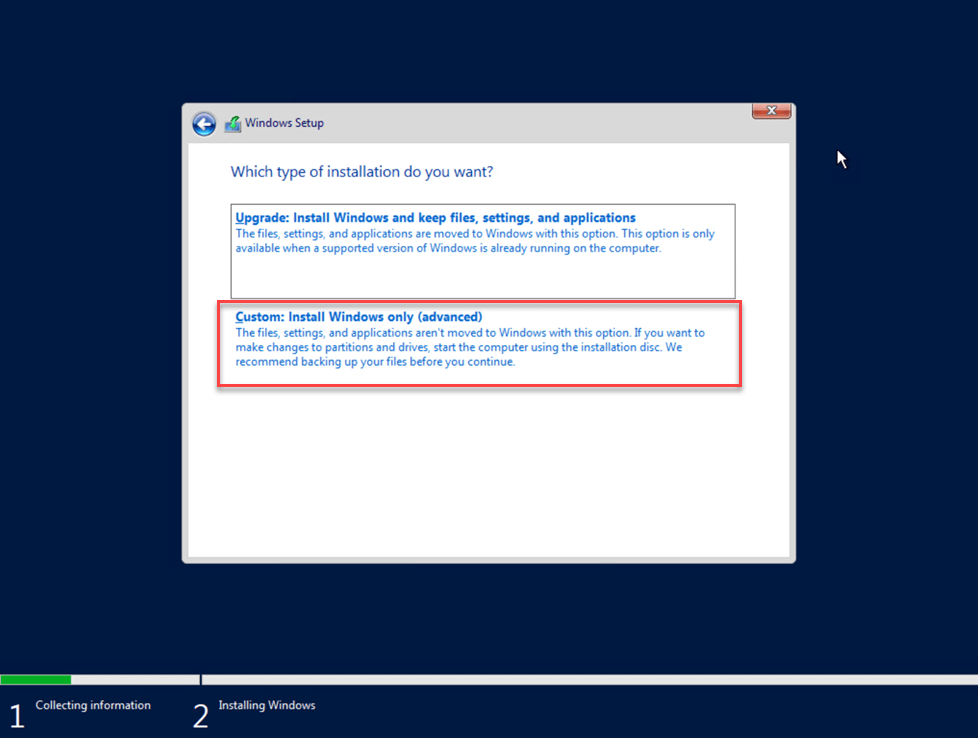
On the next screen, you select where you want to install Windows by selecting the volume for the installation.
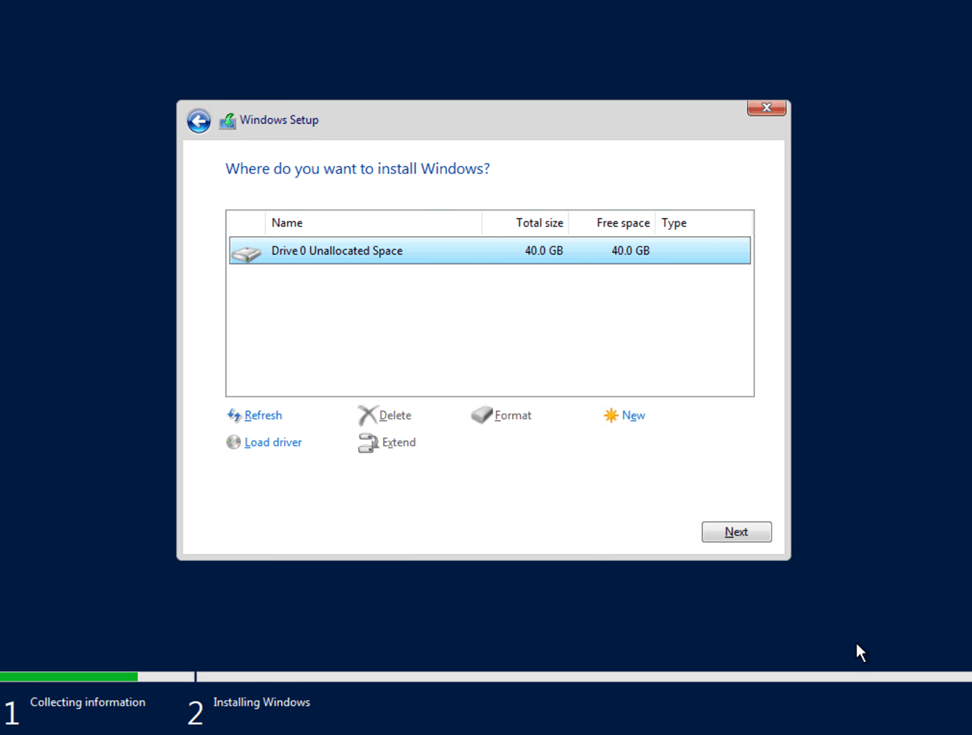
After clicking Next, the installation of Windows Server 2019 Core edition begins.
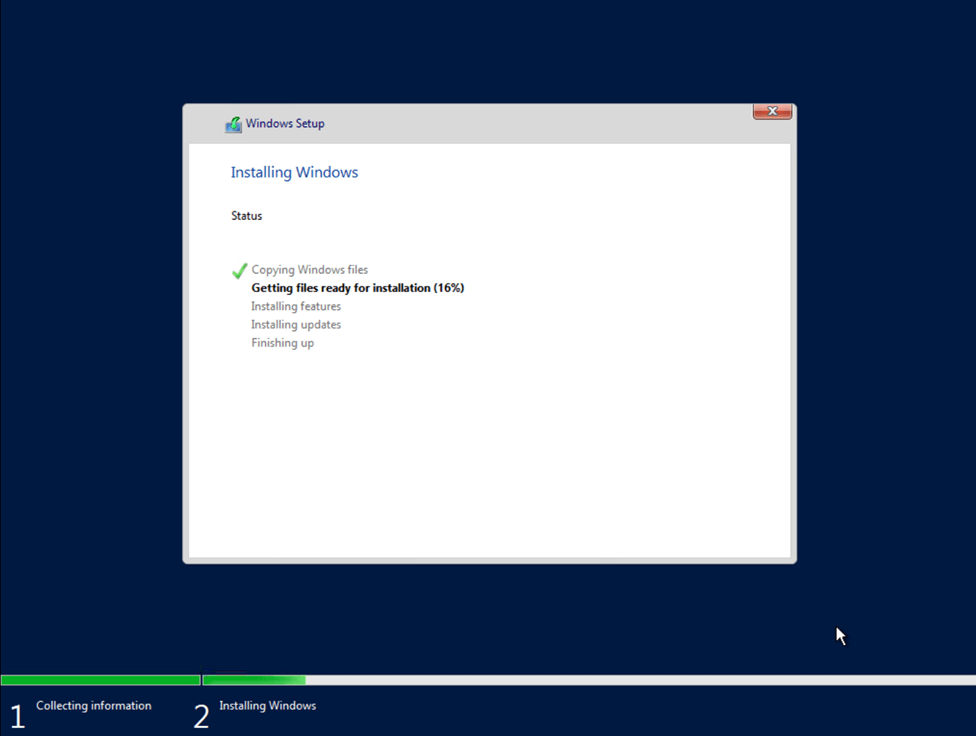
You will immediately see the difference with Core edition, since it will boot, not to the GUI environment, but to the Core command-line login dialog box.

Similar to when you install the Desktop Experience edition, you will see the prompt to change your password initially.
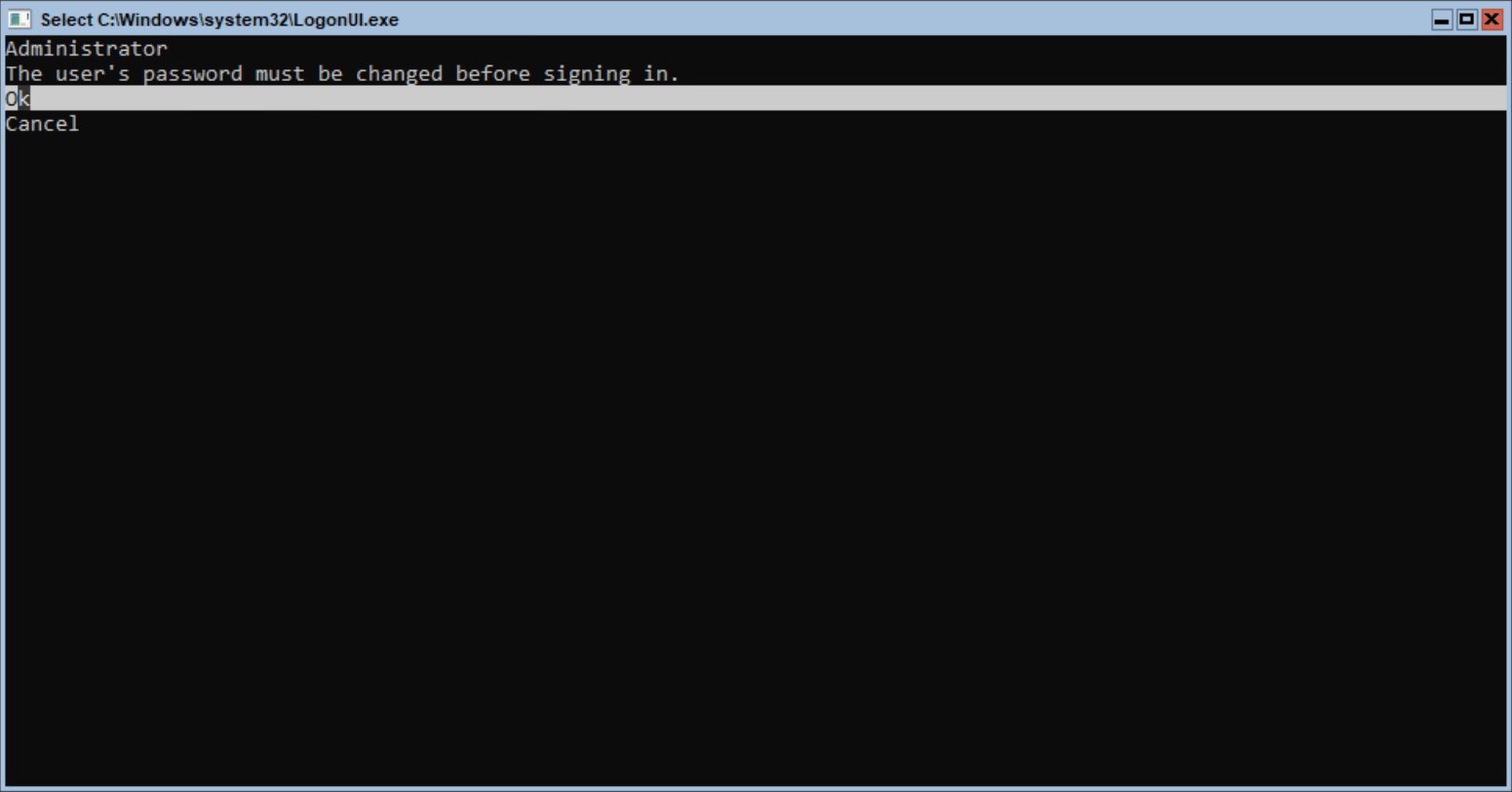
Enter a new password and confirm it.
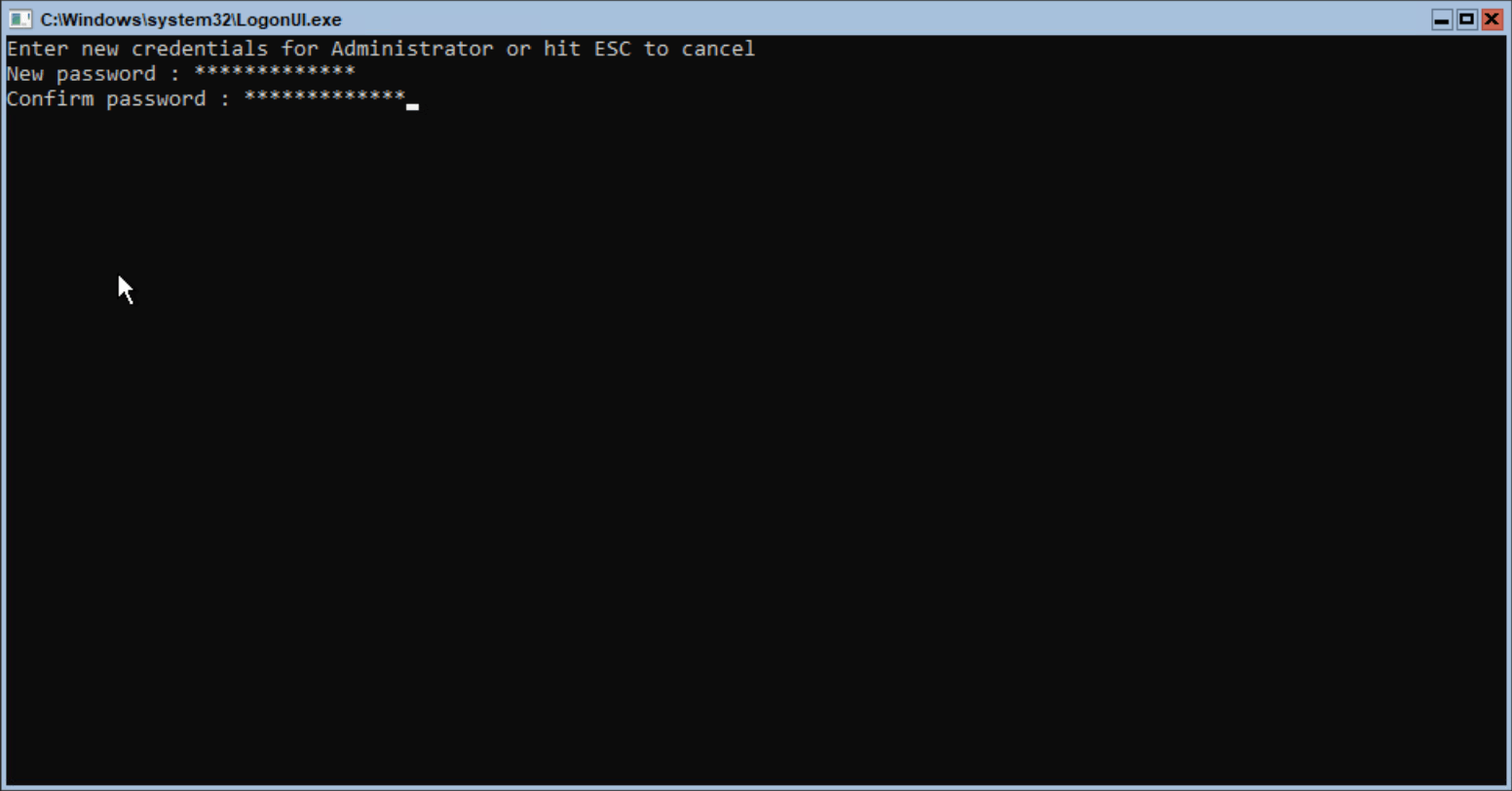
The password has been successfully changed. Press enter on the “OK” prompt.
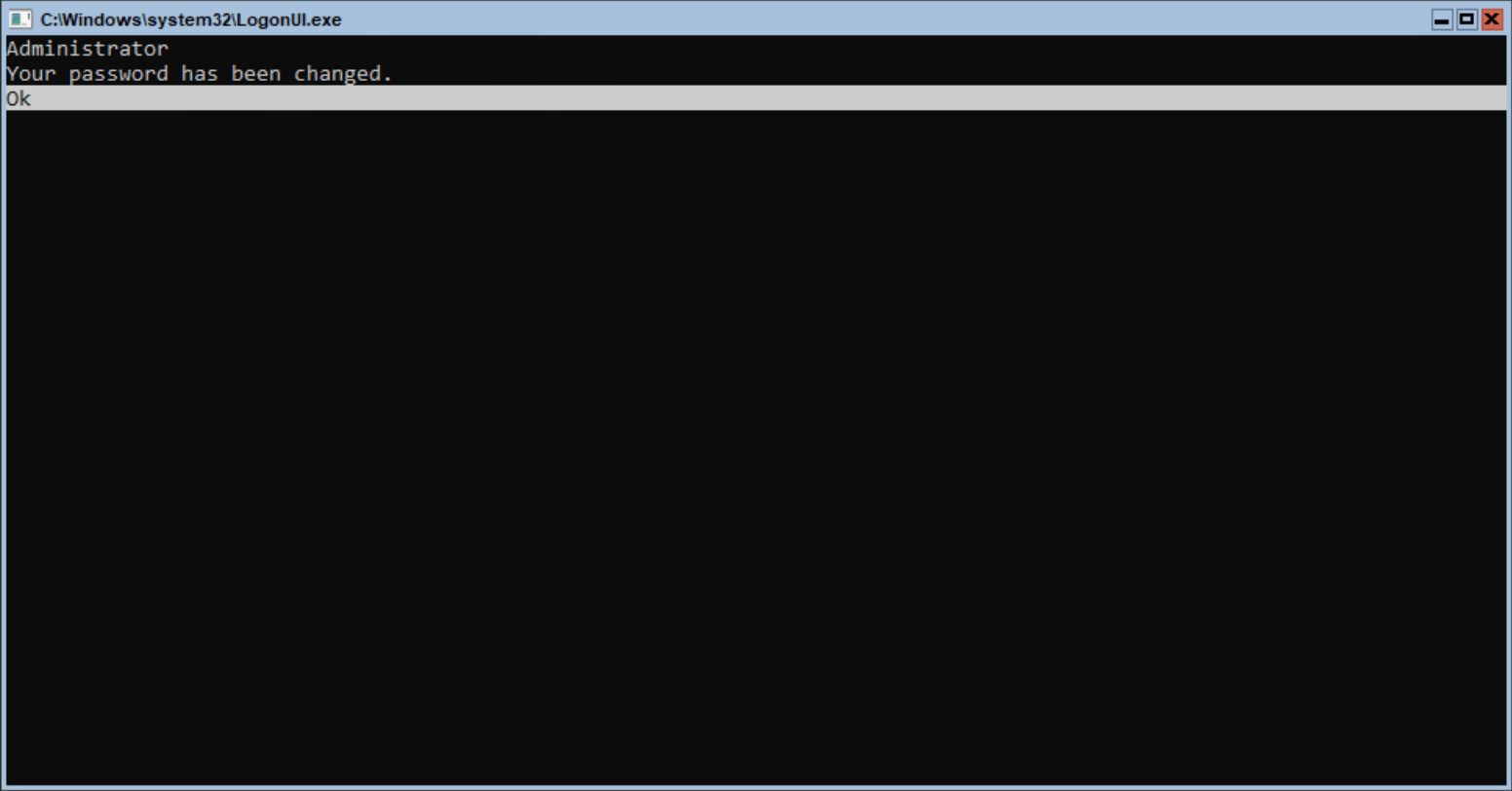
The login process will finish out by simply taking you to a command line. A notable difference with Windows Server 2019 Core is you no longer see the automatic launching of the sconfig utility. As we will see below, sconfig is the built-in utility that allows easily configuring basic initial settings of Windows Server Core after it is installed.
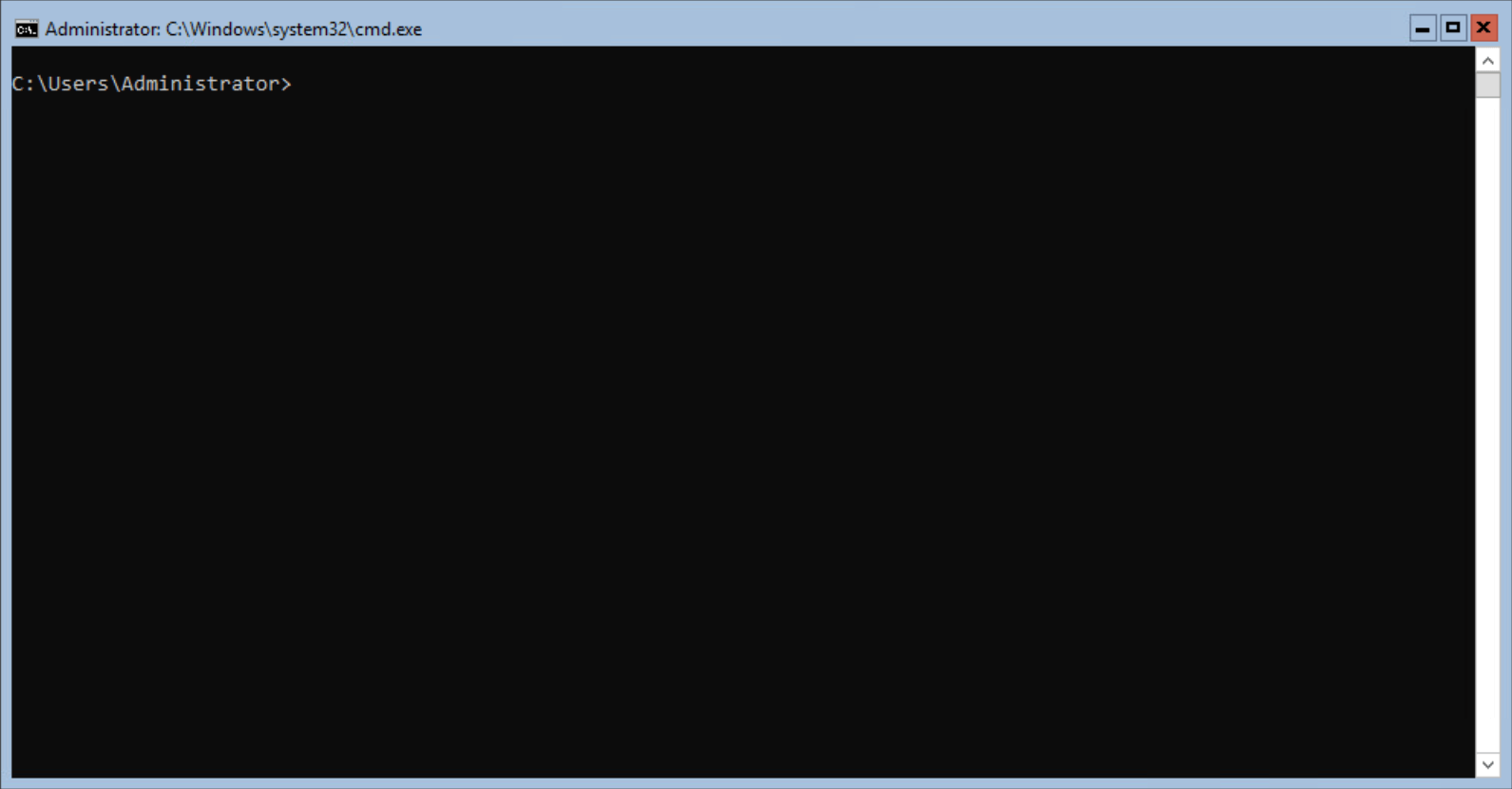
Let’s take a look next at configuring Windows Server Core and Installing the Hyper-V Role.
Configuring Windows Server Core and Installing Hyper-V Role
As is true with any new installation of Windows Server, there are many different basic configuration settings that need to be configured before using the server in production. This includes changing the server name, joining a domain (if the domain is present), configuring an IP address, remote management, updating Windows, and many other tasks.
As mentioned above, the sconfig utility has long been a utility for configuring Windows Server Core. It provides a very “menu-driven” experience in the Core version of the operating system that helps to bridge the gap between Windows Desktop Experience configuration and a command-line only experience.
A notable change is Microsoft has removed the sconfig utility from launching automatically. This change is no doubt deliberate as Windows Admin Center is the new preferred means to both configure and manage Windows Server Core.
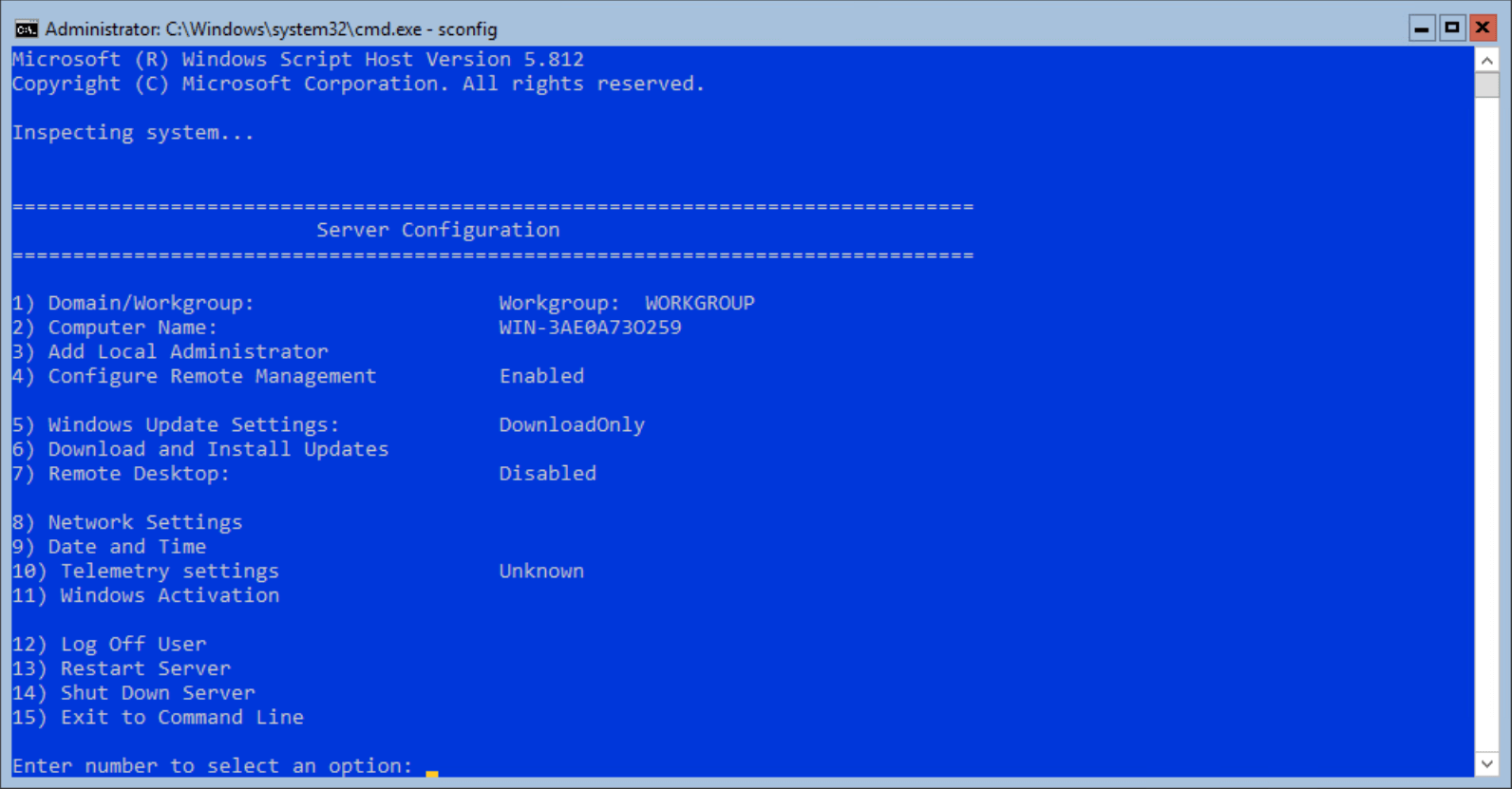
There are a few items that I generally like to do with sconfig to get the server up and running quickly to the point of being able to remotely manage it and install roles/features. This includes:
- Change network settings (IP Address, etc)
- Change the server name
- Join to the domain
- Enable RDP
- Enable Remote Management
By joining the domain, enabling RDP, and enabling remote management, you can easily connect to the server via Windows Admin Center to finish out configuration. This would include installing the Hyper-V Role.
There are a couple of ways to install the Hyper-V role:
- Using PowerShell
- Windows Admin Center
Adding the Hyper-V Role Using PowerShell
Using PowerShell directly from the console or RDP session to the Windows Server 2019 Core installation to install the roles you need such as PowerShell is extremely easy.
- Install-WindowsFeature -Name Hyper-V -IncludeAllSubFeature -Restart
Enter the PowerShell prompt from the command line and then run the above cmdlet. The server will install the Hyper-V role and automatically restart
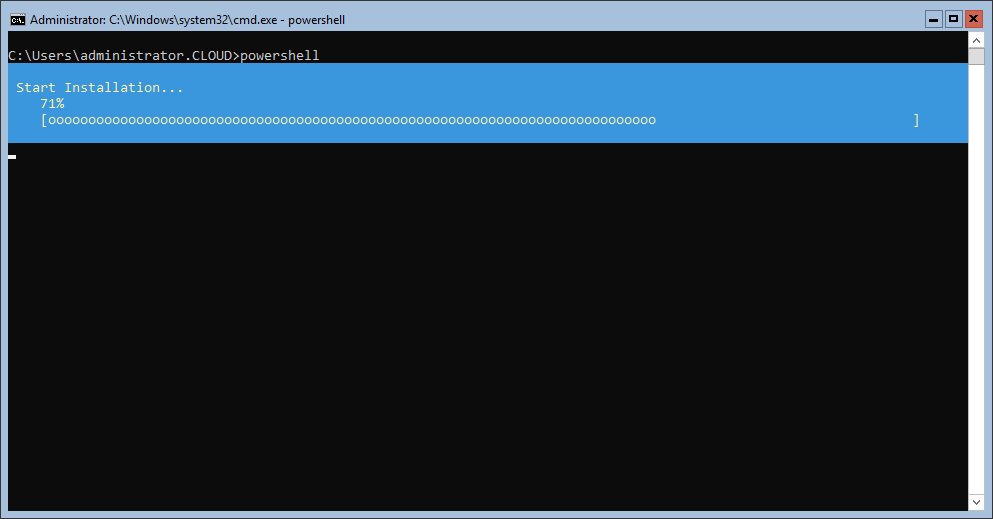
Let’s now take a look at adding the Hyper-V Role using Microsoft’s next-generation management console, Windows Admin Center.
Adding the Hyper-V Role Using Windows Admin Center
Windows Admin Center (WAC) allows you to return to the very familiar GUI approach of managing Windows Servers. WAC is easy to install, and very intuitive to use as a management platform. Once you connect your Windows Admin Center Gateway Server to your Windows Server Core installation, you have access to the Roles and Features menu just like you would if you were local to the Windows Server Core server.
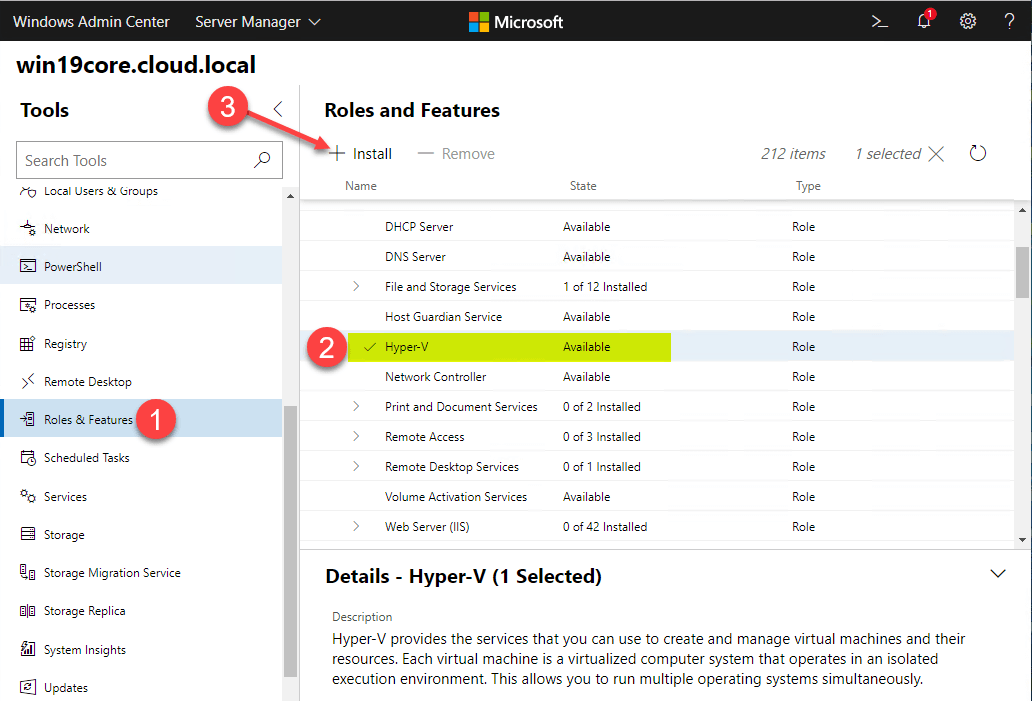
Windows Admin Center will calculate the dependencies of any role/feature installations and then prompt you to proceed with the installation, including automatic reboot options. You can place a check in the Reboot the server automatically if required.
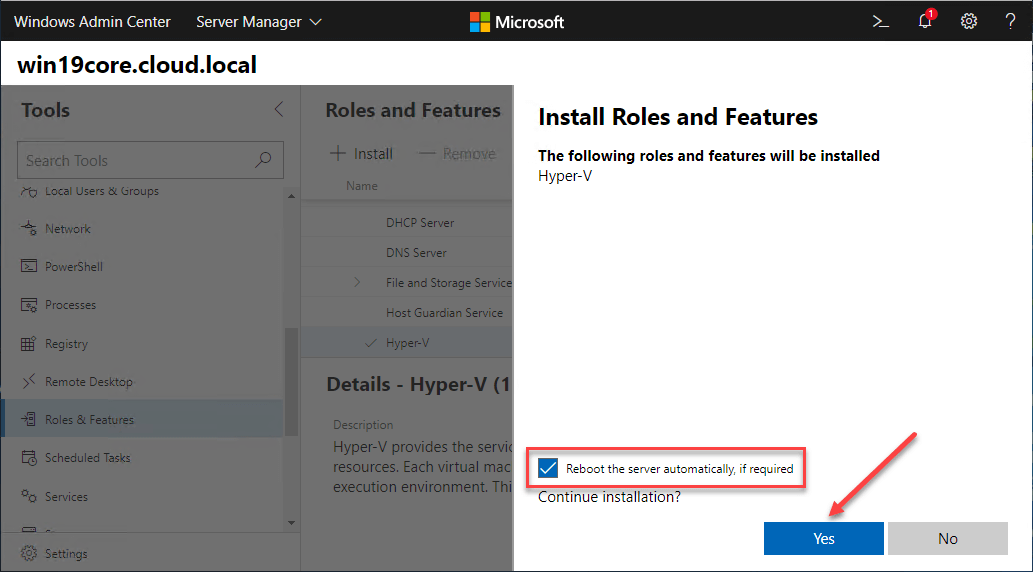
Once the installation is confirmed, you can monitor the progress under the Notifications area (bell icon)
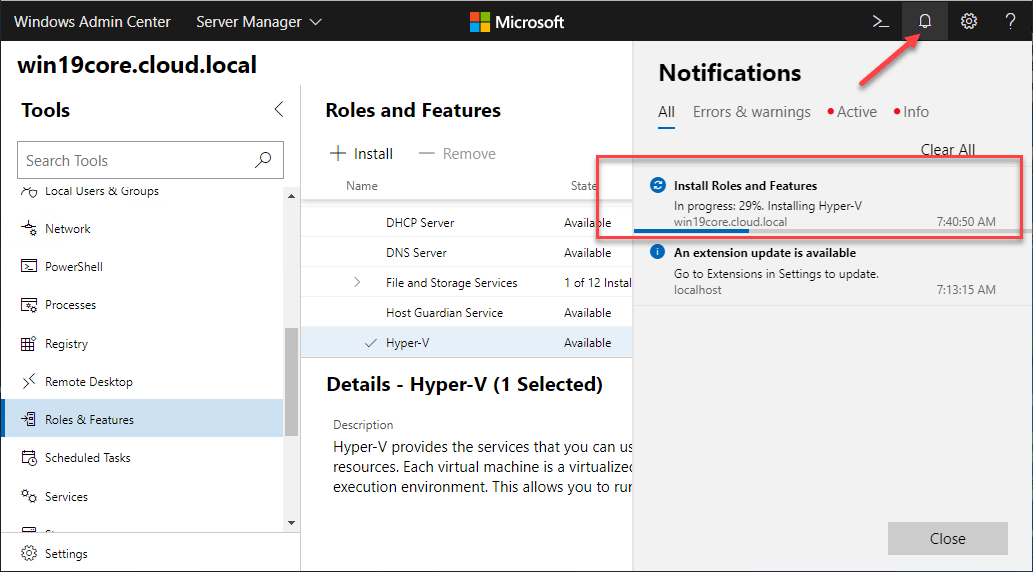
Once the server reboots, you can revisit the Roles & Features and verify the Hyper-V role State displays as Installed.
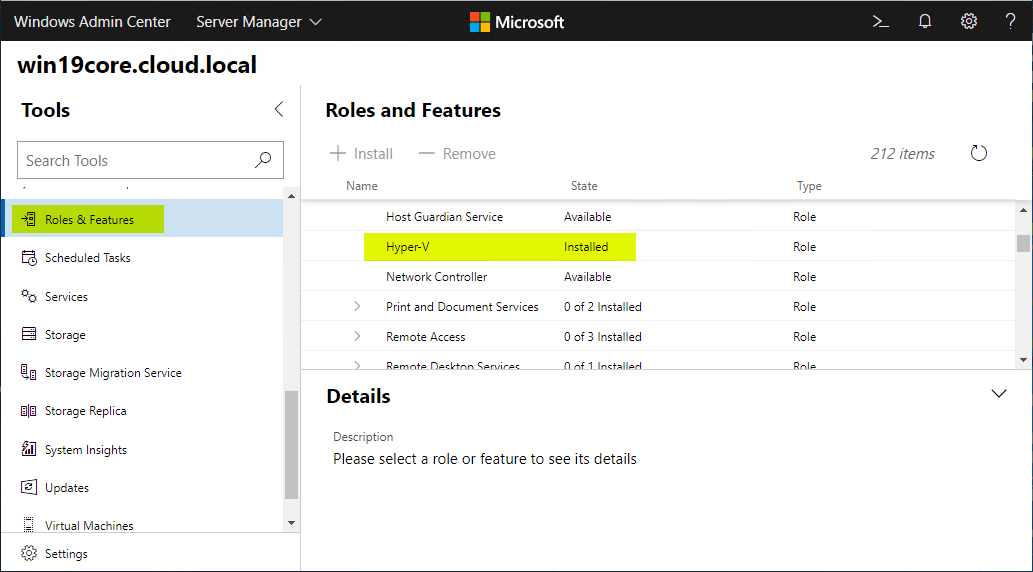
Windows Admin Center allows you to have the best of both worlds when using Windows Server Core. You get all of the benefits to your environment of using Windows Server Core installations (smaller footprint, less to manage, and better security) while at the same time having the GUI management that you are accustomed to using to manage Windows Server installations.
Creating and Managing Hyper-V Virtual Machines
With Windows Server Core installations, you can use the legacy Hyper-V Manager tool to connect to your remote Hyper-V Core installation and manage virtual machines. However, you can also do this in Windows Admin Center as well.
Once you install the Hyper-V role on your Windows Server Core installation, you will see two new menus appear, Virtual Machines and Virtual Switches. These provide most of the functionality that you will need to manage your virtual machines using the Windows Admin Center.
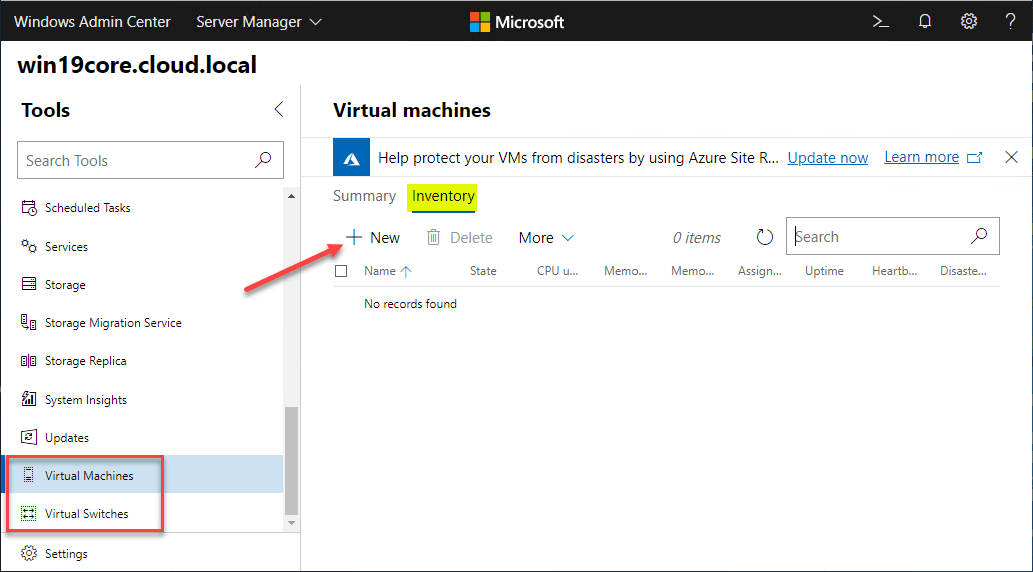
Feature on Demand (FoD) – App Compatibility
Another unique new set of capabilities that have been added to Windows Server Core installation is the Feature on Demand – App Compatibility feature set. Now, with Windows Server Core, you can add the Feature on Demand App Compatibility toolset which extends the Windows Server Core installation to allow using many of the familiar management consoles right from within Server Core.
As of Windows Server, version 1903, Microsoft has added two more tools to the App Compatibility toolset:
- Task Scheduler (taskschd.msc)
- Hyper-V Manager (virtmgmt.msc)
With the Feature on Demand App Compatibility toolset and Windows Admin Center, you can greatly fill any gaps of management that you may be missing when transitioning from the Windows Server GUI platform over to Windows Server Core.
Hyper-V Core Pros and Cons
As with anything, there are pros and cons that must be considered when thinking about using Hyper-V Core installations in your production environment. Let’s look at those.
Pros
In the context of Hyper-V, there are many Pros when it comes to running your production Hyper-V infrastructure. This includes:
- More streamlined version of Windows
- Less “bloat”
- Less to manage
- Less to patch
- Better security
For production virtual machines, it has long been recommended to run your production infrastructure using Windows Server Core. While many customers may have held back from doing this due to difficulties in managing the environment, with Windows Admin Center and Feature on Demand App Compatibility, these concerns are no longer relevant.
Additional Pros:
- GUI management via Windows Admin Center
- Ability to locally manage Windows Server Core with FoD management tools installed locally to the Windows Server Core server
Cons
When it comes to Cons, with the new capabilities found in Windows Server 2019 along with the new management tools, these are few. However, they mostly come down to ease of management. Even with the new tools, there is still a learning curve that must be overcome in most environments that are still using only the Windows Server with Desktop Experience installation.
- Many will still find Hyper-V Core more challenging to manage
- The new Windows Admin Center presents a new tool, requiring a learning curve
- Feature on Demand – App Compatibility is additional software that must be installed on your Hyper-V Core servers
Concluding Thoughts
Windows Server Core installations with Windows Server 2019 are the most powerful and fully-featured non-GUI Windows Server operating system to date. The new tools that have been introduced to extend and help with management in Windows Server 2019 Core editions have greatly minimized the difficulty of Windows Server Core management.
The new tools include Windows Admin Center and Feature on Demand (FoD) which bridge the gap between Windows Server with Desktop Experience and the Server Core version. This makes Windows Server Core installations virtually equal to the management of Windows Server with Desktop Experience installed.
Hyper-V Core is arguably the best platform on which to run your production Hyper-V environment. With the added benefits of a smaller footprint, less components to manage, and much greater security stance when compared to the Desktop Experience version, it offers the Hyper-V platform of choice when it comes to efficiency and security.
Regardless of the platform you are running your production virtual machines on, be sure to use a capable data protection solution like Vembu BDR Suite to protect your business-critical Hyper-V workloads. Check out a fully-featured trial version here.
Follow our Twitter and Facebook feeds for new releases, updates, insightful posts and more.



Leave A Comment